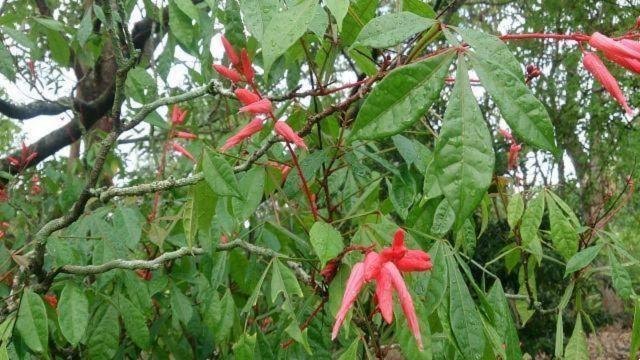
Quassia amara, characteristics of the plant
La quassia (Quassia amara L.) - or quassio - is a shrub that belongs to the Simaroubaceae family. Quassia grows wild in Guyana, northern Brazil and Venezuela.
The quassia shrub is usually tall one meter, but it can reach two or even three meters and the trunk does not exceed ten centimeters in diameter.
The leaves of the quassia are imparipinnate and have a winged petiole. Fruits develop from ruby red flowers, oval-shaped drupes.
La quassia drug bitter, that is the part of the plant with the highest content of active substances, is the bark. The family of plants to which the quassia belongs are in fact characterized by secretory channels in the bark in which a bitter substance rich in quassinosides, sesquiterpene lactones, flows. These molecules give the drug Simaroubaceae tonic and digestive properties.
Properties, use and contraindications of quassia amara
Le bitter substances contained in the quassia are called quassinosidi. Among these, the main ones are quassina and neoquassina.
Le properties of the quassia they can be traced back to the presence of bitter substances. Quassia bark is marketed in flakes and is used to stimulate appetite and to aid digestion.
The bitter substances in fact facilitate i digestive processes they have an eupeptic action: they promote gastric secretions and stimulate the taste receptors facilitating salivary secretion. Saliva and stomach secretions contain digestive enzymes, so bitter drugs are used in case of dyspepsia.
More bitter drugs used in herbal medicine and phytotherapy to promote digestive processes are the gentian (Gentiana lutea) and the centaury (Centaurea minor).
The same properties of quassia amara are attributed to Jamaican oak wood (Picrasma excelsa L.), always belonging to the Simariubaceae family.
With regard to contraindications, quassia is a safe drug but abuse of quassia bark can cause gastic mucosal irritation and nausea.
The consumption of quassia amara is not recommended in pregnancy And in the children. Since quassia has interactions with some medications, it is good to tell your doctor, pharmacist, or herbalist if you want to take quassia bark and are taking medications or supplements at the same time.
Infusion of bitter quassia
Quassia amara comes sold in herbal medicine in the form of wood chips or dust.
To prepare a quassia infusion starting from the wood, it is necessary to bring a tablespoon of bark to a boil in water and let it boil for about ten minutes. After that the decoction of quassia it can be filtered and consumed, possibly before main meals.
If you use the bitter quassia powder, it is sufficient to disperse a teaspoon of powder in boiling water and drink the preparation about fifteen minutes before meals.
Quassia as a plant pesticide
It seems that the bitter substances present in the quassia have arepellent action on plant pests.
protect plants from aphids, cochineal and other plant parasites, it is sufficient to spray the macerate of quassia bitter on the leaves.
Il macerated quassia amara is prepared by letting 20 g of quassia amara bark macerate in 1 liter of water for 24 hours. After this period, the macerate is brought to a boil and left on the stove for about an hour. Finally, the macerate is allowed to cool, filtered and sprayed on plants affected by parasites.
Compared to other plant pesticides, quassia amara it is not toxic to humans, for domestic animals and pollinating insects.


























